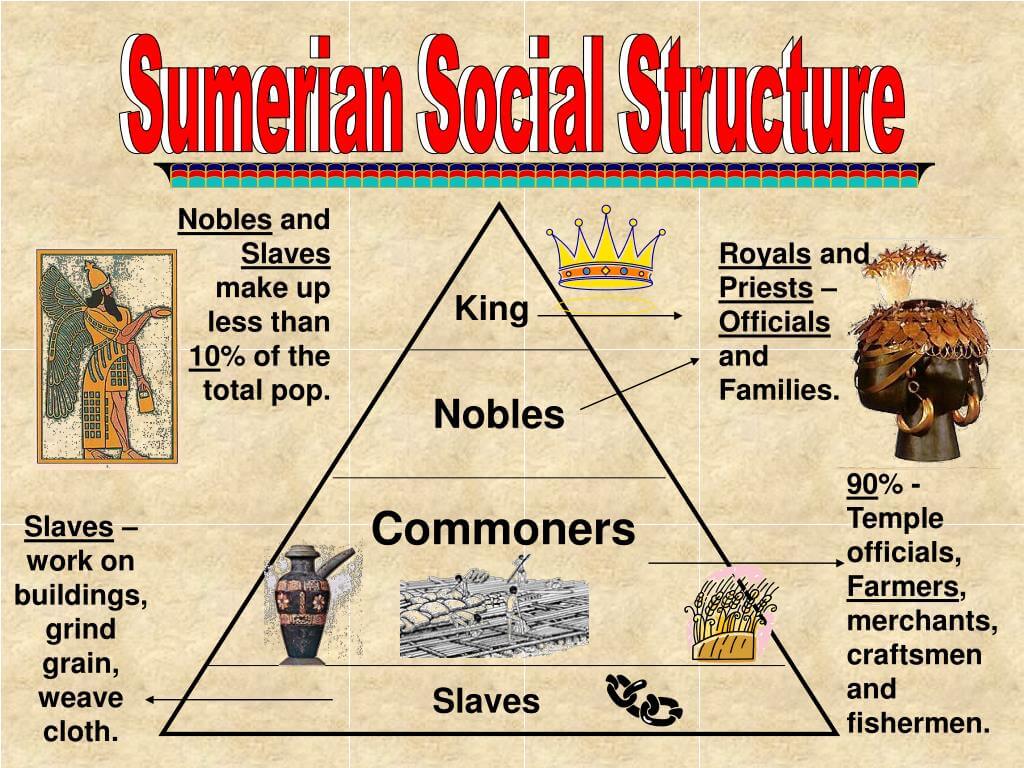The ancient civilization of Sumer, located in the southern part of Mesopotamia, is often regarded as one of the cradles of human civilization. As one of the earliest urban societies, Sumer was characterized by its remarkable developments in language, architecture, and, notably, social organization. Understanding how the social classes of Sumer were organized provides valuable insights into the cultural and political dynamics of this influential society. The structure of Sumerian society was not only hierarchical but also intricate, consisting of different layers that defined the roles and responsibilities of its members.
At the top of this hierarchy were the ruling elites, who held power and influence over the city-states. Their positions were typically inherited, and they were often seen as divinely ordained leaders. Below them were the priests, who played a crucial role in mediating between the gods and the people. This religious influence permeated Sumerian life, as temples served as economic and social centers. The organization of social classes in Sumer was not merely a reflection of wealth and power; it also dictated the daily lives and opportunities available to individuals within the society.
The middle class comprised artisans, merchants, and skilled workers who contributed to the economy through trade and craftsmanship. Finally, at the bottom of the social ladder were the laborers and slaves, who often worked in agriculture or construction and had limited rights. Their existence underscored the disparities within the society, highlighting the complexities of Sumer's social structure. As we delve deeper into the various layers of Sumerian society, we will uncover how these social classes were organized and their significance in the grand tapestry of ancient Mesopotamian civilization.
What Were the Main Social Classes in Sumer?
In ancient Sumer, the social classes were distinctly defined, each with its own roles and responsibilities. Understanding these classes requires a closer look at the various groups within Sumerian society:
- 1. The Nobility: This class included kings, queens, and high-ranking officials. They were responsible for governance and law.
- 2. The Priesthood: Priests held significant power, often acting as advisors to rulers and conducting important religious ceremonies.
- 3. The Middle Class: Artisans, merchants, and scribes formed this class, contributing to the economy through trade and skilled labor.
- 4. The Lower Class: Comprised of laborers and farmers, this class was essential for agriculture and manual labor.
- 5. Slaves: Often prisoners of war or debtors, slaves had the least rights and were typically owned by wealthier citizens.
How Were the Social Classes of Sumer Organized?
The organization of social classes in Sumer was hierarchical and stratified. Each class had its own distinct roles that contributed to the overall functioning of society. The ruling class was situated at the apex, overseeing the administration and governance of city-states. Below them were the priests, whose religious authority gave them considerable influence. The middle class, which included skilled workers and traders, played a vital role in the economy, while the lower class and slaves provided the labor necessary to sustain agricultural production.
What Role Did Religion Play in Sumerian Society?
Religion was a cornerstone of Sumerian culture and had a profound impact on its social structure. The priests, who belonged to the upper echelons of society, were responsible for conducting rituals and maintaining the temples, which served as both religious and economic hubs. The belief in multiple gods influenced the daily lives of the Sumerians, as they sought to appease deities through offerings and worship. This religious context reinforced the power of the ruling class, as many rulers claimed divine sanction for their authority.
How Did Economic Factors Influence Social Classes?
The economy of Sumer was predominantly agrarian, and land ownership was a significant determinant of social status. Wealth was accumulated through agricultural production, trade, and craftsmanship. The emergence of trade routes fostered economic growth, allowing the middle class to flourish. This economic stratification also led to the exploitation of the lower classes, who worked tirelessly to sustain the wealth of the elite. As trade expanded, merchants gained prominence, further complicating the social hierarchy.
What Were the Rights and Responsibilities of Each Class?
Each social class in Sumer had specific rights and responsibilities that defined their place within the hierarchy. The nobility enjoyed privileges such as land ownership and governance, while priests wielded considerable power in religious and political matters. The middle class had the right to own property and engage in trade, while laborers had limited rights, often working under the supervision of wealthier landowners.
How Were Social Classes Reflected in Sumerian Art and Literature?
The social classes of Sumer were vividly depicted in their art and literature. Temples and palaces were adorned with intricate sculptures and carvings that celebrated the achievements of the ruling class and the gods. Literature, such as the Epic of Gilgamesh, often explored themes of power, mortality, and the human condition, reflecting the societal values and struggles faced by different classes. Sumerian cuneiform inscriptions provide further evidence of the roles and identities of various social groups.
What Legacy Did Sumer's Social Structure Leave Behind?
The social organization of Sumer laid the groundwork for future civilizations in Mesopotamia and beyond. The concepts of governance, law, and social stratification influenced subsequent empires, including the Akkadians, Babylonians, and Assyrians. Sumer's rich cultural heritage, including its advancements in writing, mathematics, and architecture, continues to inspire and inform modern societies. The complexities of Sumerian social classes remind us of the enduring nature of human hierarchies and the pursuit of power.
You Might Also Like
Unveiling The Life And Career Of Jan SmithersAsha Jayan: A Journey Through Art And Inspiration
Unraveling The Enigma Of Jessie Phoenix Jopling
Exploring The Fascinating World Of Davido Height
Slope Unblocked: The Ultimate Guide To Endless Fun
Article Recommendations
- Emily Rath Orzabal Birthday
- Sophia Rain Spiderman
- Lane Kiffin Wife
- Brooke Monk Deepfake Porn
- Mikayla Campinos Leaks
- Jade Castrinks
- Chiefs Records
- Jcpenney Associate Kiosk At Home
- Elizabeth Carlisle
- Jeffrey Dahmer Real Crime Scene Photos

